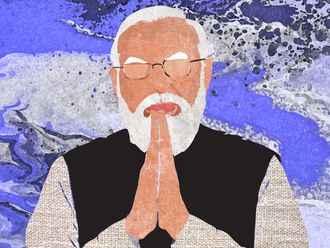
Reports of the impending death of books turned out to have been greatly exaggerated. Despite the popularity of devices such as Kindle and the ubiquitous presence of tablets and smartphones, the sales of paper books are rising, especially among younger people.
And despite the fact that the way music is distributed and consumed has been forever changed — first by MP3s and then by the rise of services such as iTunes — the old-fashioned vinyl LP, once thought to have been killed off for good by CDs, is making a comeback of its own.
Yes, we may be living in a digital age, but there’s obviously still room for the analogue and the physical, whether it’s a beautiful, leather-bound edition of a favourite novel or an 180g Pink Floyd vinyl.
But as much as I support this re-embrace of the physical, the line has to be drawn somewhere, and that somewhere is printed photographs.
I can hear some of the objections already: It’s easy to lose forever photos that only exist on a digital device, printed photos simply look better, etc. Do these reasons given for clinging to printed photos hold up to closer scrutiny? I’m afraid not!
Let’s take a look at the first objection. It may seem intuitive that physical objects are easier to keep safe than some bits and bytes existing only on some device powered by a battery, but that’s not really true. Printed photos can be lost, damaged or stolen, and even the highest quality prints degrade with age. But a digitally stored photo really is forever.
Keeping your photos on one device does make it easier to lose them permanently, but this risk can be mitigated and even completely eliminated by backing them up to another device or, even better, to the cloud. There, safe in the data centres of Google or Microsoft, your memories can live on forever, never losing even a tiny bit of their original quality. Fifty years later, they will look as good as the day they were taken.
This brings us to the second objection mentioned above, namely that printed photos look better. That may have been true in the past, when phone screens, particularly, did not have very high resolutions. Today, though, computer, phone, tablet and digital photo screens have resolutions far exceeding that of the 300 dots per inch at which photos are printed.
But what else do digital photos have going for them? Quite a lot of things, actually.
Thanks to the ever-dropping price of storage, you can happily take thousands of photos every year and have them ready to look at or show to others at a moment’s notice. Imagine how much you’d have to pay to print them all, not to mention the physical space required.
It’s been estimated that more than one trillion photos will be taken in 2017, and even if it was possible to print them all, we would be doing even more irreversible harm to the environment than we already do. In an age in which everything is going “green”, cutting down trees to create the paper needed for printing photos seems like a very counterproductive throwback to times past.
Storing photos digitally also has the benefit of making it easy to take them with you wherever you go. I don’t just mean that it’s easy to show your co-workers all your holiday snaps, though. I’m talking about something that will be familiar to many people reading this, especially expats: The anxiety of figuring out what to do with all your possessions when you relocate to another country or return to your country of origin. It’s hard enough figuring out what to take with you, what to sell and what to just throw away; adding a bunch of unnecessary and bulky photo albums to the mix just adds another needless complication.
I’m not saying that there isn’t a case to be made for physical photos, or that there are reasons to regard them as somehow more special than digital ones. But their disadvantages, and the many advantages of their digital counterparts, mean that printed photos have to, and eventually will, go the way of the dinosaurs: Extinct, and existing only in museums.
We have successfully managed to transition away from the physical to the digital on several fronts already, and in almost every case, it’s been a change for the better. Who misses the days of fax machines, after all? Or those old manual credit card imprint machines?
Map books have a certain charm, but cannot possibly compete with the convenience and speed of navigation apps and GPS devices. But while it may make sense to keep a map book around for emergency situations, such as when your phone has run out of power, there’s no such thing as an emergency stack of photographs. Clinging to this outdated way of preserving your memories is just too costly to your time and money, and the environment.
So throw away that photo printer, and invest in a good digital photo frame instead. You’ll be doing yourself, and the planet, a favour.











